Siberia << sy BIHR ee uh >> is a vast, thinly populated region in northern Asia. It lies within Russia. Siberia makes up about 75 percent of the area of Russia, but only about 20 percent of the Russian people live there. Ice and snow cover most of the region about six months a year, and the temperature sometimes drops below –90 °F (–68 °C).
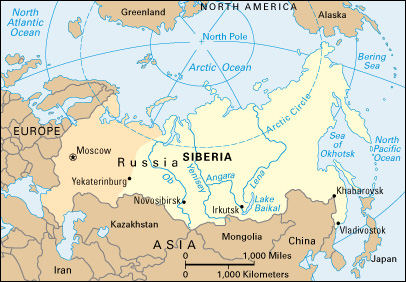
Through the centuries, Russian, and later Soviet, rulers sent millions of criminal and political prisoners to isolated parts of Siberia. The Soviet Union was formed under Russia’s leadership in 1922, and it existed until the end of 1991. Many prisoners were forced to work as laborers building factories, mines, and railroads. In the 1930’s, the Soviet Union began to mine Siberian coal and minerals. Oil and natural gas production on a large scale began in the 1960’s and 1970’s.
The land and climate
Siberia covers about 4,938,000 square miles (12,789,000 square kilometers). It has three main areas—the West Siberian Plain, the Central Siberian Plateau, and the East Siberian Uplands. The West Siberian Plain, the largest level region in the world, extends from the east side of the Ural Mountains to the Yenisey River. The Central Siberian Plateau lies between the Yenisey and Lena rivers. Lake Baikal, the world’s deepest lake, lies on the plateau’s southern edge. It is 5,315 feet (1,620 meters) deep. The East Siberian Uplands consist of a series of mountain ranges between the Lena River and the Pacific coast. This area includes Siberia’s highest point, an active volcano named Klyuchevskaya that rises 15,584 feet (4,750 meters).
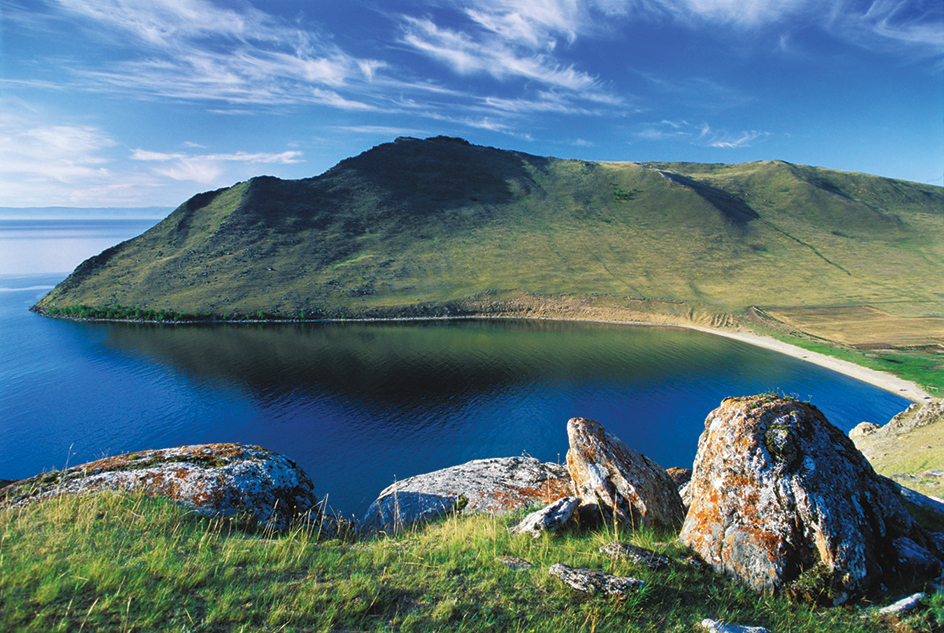
Moss, lichens, and a few kinds of small shrubs grow in the tundra, a narrow belt of vegetation along Siberia’s Arctic coast. South of the tundra, a vast evergreen forest called the taiga spreads from the Urals to the Pacific coast. In the extreme southwest lie the steppes (grasslands), Siberia’s richest farming area.
Arctic foxes, lemmings, and reindeer live in the tundra. Ermines, lynxes, red foxes, and sables make their home in the taiga. Fishing crews catch cod, crabs, and salmon off the Pacific coast.
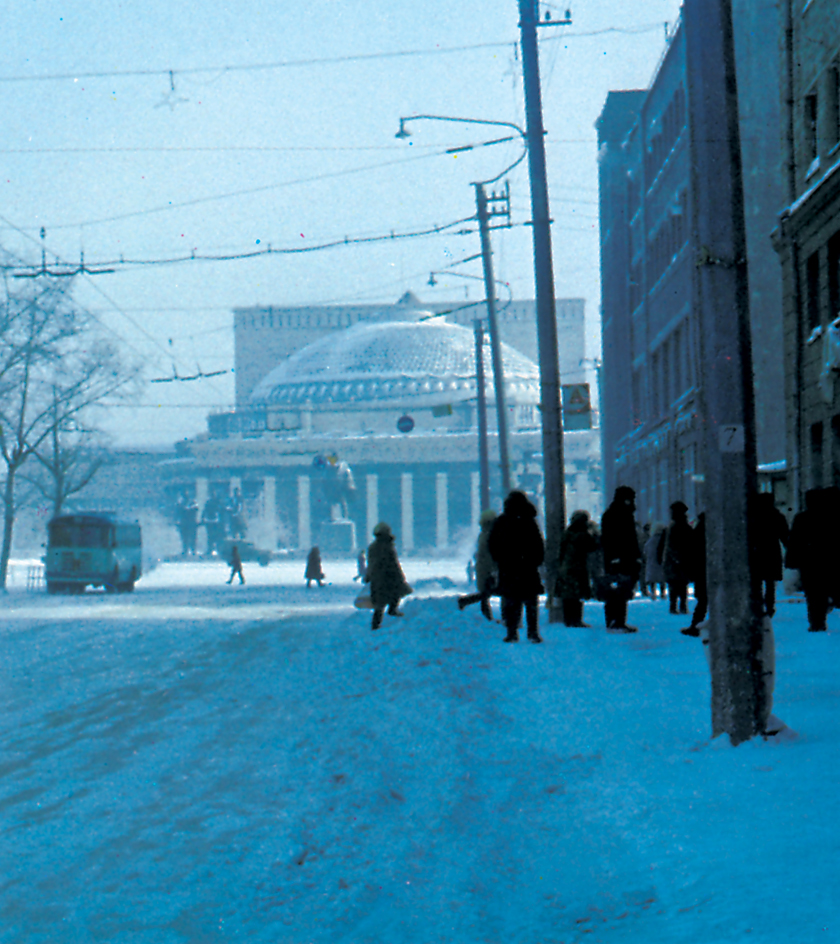
Average temperatures in northeastern Siberia range from below –50 °F (–46 °C) in January to about 60 °F (16 °C) in July. In the steppes, they vary from 3 °F (–16 °C) in January to 64 °F (18 °C) in July. The annual precipitation (rain, melted snow, and other moisture) averages 5 inches (13 centimeters) in the north and 31 inches (80 centimeters) in the steppes. A layer of permanently frozen ground called permafrost covers most of eastern Siberia.
The people
Siberia has a population of about 31 million. It has a population density of only 6 1/2 people per square mile (2.5 people per square kilometer). Siberia makes up the Asian part of Russia. The European part of Russia is much more densely populated. Most Siberians are Russians. Mongol and Turkic groups such as Buryats, Tuvinians, and Yakuts also live in Siberia.
Most of Siberia’s people live in cities. Most city people are crowded into small apartments. Many people in rural areas live in simple, but more spacious, log houses. Novosibirsk, the largest city in Siberia, has a population of about 1.6 million. Other Siberian cities with over 500,000 people include Barnaul, Irkutsk, Kemerovo, Krasnoyarsk, Novokuznetsk, Omsk, Tomsk, and Vladivostok.
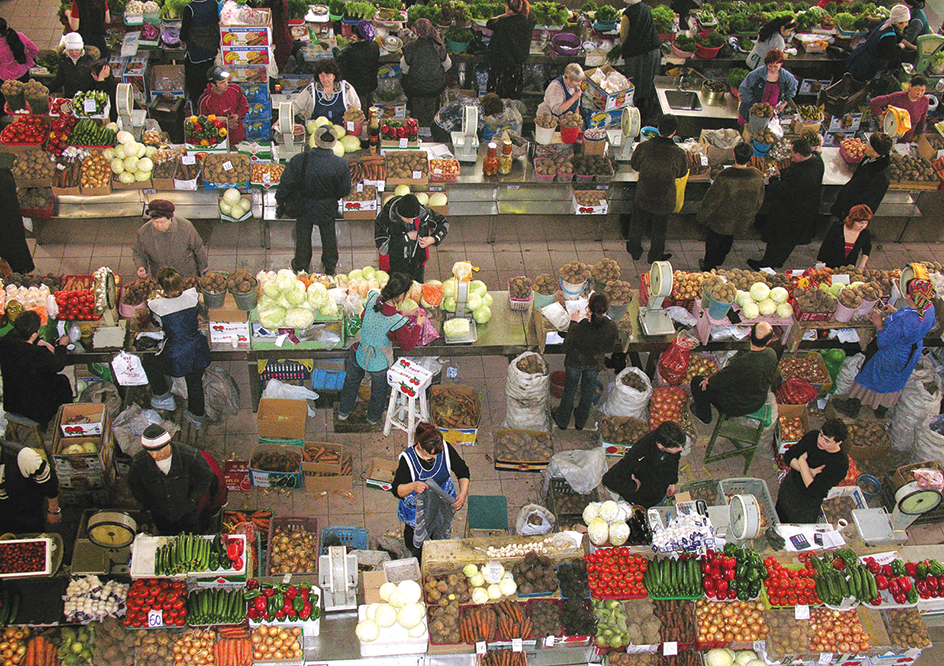
The large-scale use of forced labor for Siberian construction projects ended soon after the Soviet dictator Joseph Stalin died in 1953. The government then began trying to attract workers by offering such rewards as high salaries and long vacations. However, workers often stayed only a few years before leaving for better living conditions elsewhere. Siberia’s population growth ended in the late 1980’s. After the Soviet Union’s collapse, many people returned to the milder climate of European Russia. Government subsidies support the population’s food and energy needs during the long, cold winters.
Economy
Siberia has an abundance of natural resources. Many minerals, including diamonds, gold, platinum, tin, and tungsten, are mined in harsh, isolated areas. Vast oil fields along the Ob River began operating in 1965. The fields now produce most of Russia’s oil. Much of the country’s coal is mined in Siberia, chiefly from deposits in the Kuznetsk Basin in Western Siberia. Western Siberia also accounts for most of Russia’s gas production. Siberian forests supply timber.
Loading the player...Oil field in Siberia
Most of the hydroelectric power generated in Russia comes from dams on Siberia’s rivers, especially on the Angara and Yenisey rivers. Sayano-Shushensk Dam on the Yenisey River, one of the world’s largest power dams, generates about 61/2 million kilowatts.
The southern steppes include Siberia’s most productive farmlands. Farmers there grow barley, oats, and wheat. Livestock raised in Siberia include cattle, sheep, and reindeer. The region has many dairy farms. Siberian manufacturing, which collapsed almost completely after the fall of the Soviet Union, was centered mainly in the Kuznetsk Basin. Leading products included building materials, chemicals, and farm machinery.
The Trans-Siberian Railroad, which crosses southern Siberia, carries passengers and freight to and from the European part of Russia. Almost all of Siberia’s resources are used in the European part, where most Russians live. The railroad transports coal and other minerals, and pipelines carry oil and natural gas. In the icebound Arctic Ocean, shipping lanes remain open for only a few months in summer. Airlines connect Siberian cities with cities in the European part of the country.
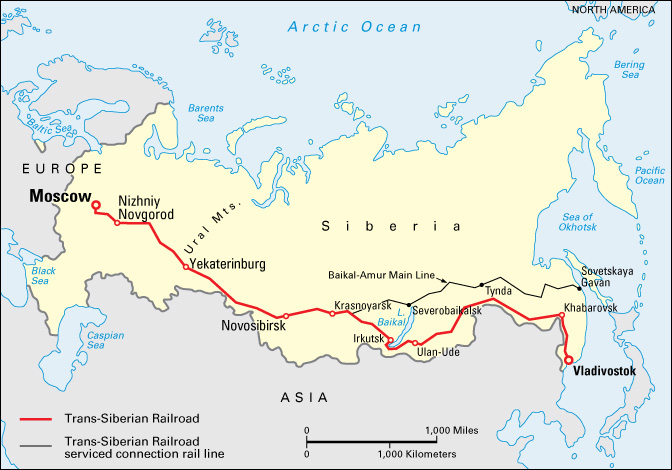
History
People have lived in Siberia for many thousands of years. Asian nomads called Tatars, under the Mongolian emperor Genghis Khan, conquered the southern steppes during the early 1200’s. They drove many of the original tribes into the northern forests. In the late 1500’s, a band of Russian Cossacks, led by an adventurer named Yermak, defeated the Tatars. Cossacks reached the Pacific coast in 1639. By 1700, the Russians controlled almost all of Siberia.
In the early 1900’s, Russia’s czarist government began building industries in Siberia. After the revolution of 1917, Siberia became a center of the counterrevolutionary movement. Siberia became part of the Soviet Union when it was established in 1922. During World War II (1939-1945), the Soviet government moved hundreds of factories and thousands of workers from the European part of the Soviet Union to Siberia. This action protected the factories from the German armies that invaded from the west. Siberia remained a part of Russia after the Soviet breakup in 1991.
In the mid-1900’s, scientists discovered large deposits of coal, oil, and other resources in Siberia. In 1974, construction began on a 1,900-mile (3,100-kilometer) railroad called the Baikal-Amur Mainline, which was to run between Lake Baikal and Komsomolsk, about 200 miles (320 kilometers) north of Khabarovsk. The railroad opened in 1984 and was operating along its entire length by the early 1990’s.
